NASA, partners develop 'lunar backpack' technology to aid moon explorers
Saturday, 23 April 2022 07:01 Imagine a mountaineering expedition in a wholly uncharted environment, where the hikers had the ability to generate a real-time 3D map of the terrain. NASA researchers and their industry partners have developed a remote-sensing mapping system set to aid explorers in the most isolated wilderness imaginable: the airless wastes at the South Pole of the Moon.
The Kinematic Navigation and Carto
Imagine a mountaineering expedition in a wholly uncharted environment, where the hikers had the ability to generate a real-time 3D map of the terrain. NASA researchers and their industry partners have developed a remote-sensing mapping system set to aid explorers in the most isolated wilderness imaginable: the airless wastes at the South Pole of the Moon.
The Kinematic Navigation and Carto Perseverance starts Jezero Delta campaign
Saturday, 23 April 2022 07:01 We made it! Perseverance is at the delta, and gracing us with stunning images to pour over. Mars 2020 is officially out of "Rapid Traverse" mode, where we put the pedal to the metal and focused on driving. This week, we are back to standard operations, and the team is beginning our Delta Front Campaign. You can check out last week's blog for details on why exploring the delta is so exciting.
We made it! Perseverance is at the delta, and gracing us with stunning images to pour over. Mars 2020 is officially out of "Rapid Traverse" mode, where we put the pedal to the metal and focused on driving. This week, we are back to standard operations, and the team is beginning our Delta Front Campaign. You can check out last week's blog for details on why exploring the delta is so exciting. Aphelion Aerospace completes rocket engine development test
Saturday, 23 April 2022 07:01 Aphelion Aerospace is proud to announce reaching a major milestone in developing the company's commercial launch services with the completion of critical propulsion system testing. The team recently spent two weeks at the company's test facility in Wyoming integrating a rocket engine and support systems on a ground test stand and conducting a series of hot fire tests. The test activity was condu
Aphelion Aerospace is proud to announce reaching a major milestone in developing the company's commercial launch services with the completion of critical propulsion system testing. The team recently spent two weeks at the company's test facility in Wyoming integrating a rocket engine and support systems on a ground test stand and conducting a series of hot fire tests. The test activity was condu Is Webb at its final temperature
Saturday, 23 April 2022 07:01 The Mid-Infrared Instrument (MIRI) on NASA's James Webb Space Telescope is now cooled by a gaseous helium cryocooler to under 7 kelvins. With the cooler in its final state, the Webb team is operating the MIRI instrument this week as part of seventh and final stage of the telescope alignment. When the instrument is operating, the detectors and electronics produce heat, which is balanced by the cr
The Mid-Infrared Instrument (MIRI) on NASA's James Webb Space Telescope is now cooled by a gaseous helium cryocooler to under 7 kelvins. With the cooler in its final state, the Webb team is operating the MIRI instrument this week as part of seventh and final stage of the telescope alignment. When the instrument is operating, the detectors and electronics produce heat, which is balanced by the cr Pushing the boundaries of space exploration with X-ray polarimetry
Saturday, 23 April 2022 07:01 The secrets hiding in the vast expanse of outer space have intrigued humankind for ages. The invention of the optical telescope during the 17th century allowed humans to see stars appearing as mere twinkling dots in the night sky. Thanks to scientific innovations over the next four centuries, we can now launch telescopes into space to get a better look at astronomical objects and even study them
The secrets hiding in the vast expanse of outer space have intrigued humankind for ages. The invention of the optical telescope during the 17th century allowed humans to see stars appearing as mere twinkling dots in the night sky. Thanks to scientific innovations over the next four centuries, we can now launch telescopes into space to get a better look at astronomical objects and even study them OneWeb agrees satellite launch program with New Space India
Saturday, 23 April 2022 07:01 OneWeb reports that the company and New Space India Limited, the commercial arm of the Indian Space Research Organisation, have entered into an agreement that will help ensure OneWeb completes its satellite launch programme.
The first launch with New Space India is anticipated in 2022 from the Satish Dhawan Space Centre (SDSC) SHAR, Sriharikota. The launches will add to OneWeb's total in-o
OneWeb reports that the company and New Space India Limited, the commercial arm of the Indian Space Research Organisation, have entered into an agreement that will help ensure OneWeb completes its satellite launch programme.
The first launch with New Space India is anticipated in 2022 from the Satish Dhawan Space Centre (SDSC) SHAR, Sriharikota. The launches will add to OneWeb's total in-o Spaceflight prepares to launch its 50th mission
Saturday, 23 April 2022 07:01 Spaceflight Inc., the leading global launch services provider, is preparing for its 50th mission, which will launch aboard a Rocket Lab Electron no earlier than April 22. The RL-9 mission, called "There and Back Again," is scheduled to launch from Rocket Lab's Launch Complex 1 in New Zealand. Following this launch, Spaceflight will have successfully launched 448 sp
Spaceflight Inc., the leading global launch services provider, is preparing for its 50th mission, which will launch aboard a Rocket Lab Electron no earlier than April 22. The RL-9 mission, called "There and Back Again," is scheduled to launch from Rocket Lab's Launch Complex 1 in New Zealand. Following this launch, Spaceflight will have successfully launched 448 sp Planet unveils details about Pelican Constellation
Saturday, 23 April 2022 07:01 Planet Labs PBC (NYSE: PL), a leading provider of daily data and insights about Earth, today unveiled details about plans for Pelican, its next-generation satellite constellation, which was previously announced at Planet Explore 2021.
Pelican is designed to rapidly capture changing events as they unfold and to provide a leap forward in capabilities for Planet customers - from higher revisi
Planet Labs PBC (NYSE: PL), a leading provider of daily data and insights about Earth, today unveiled details about plans for Pelican, its next-generation satellite constellation, which was previously announced at Planet Explore 2021.
Pelican is designed to rapidly capture changing events as they unfold and to provide a leap forward in capabilities for Planet customers - from higher revisi Copernic Space welcomes Kevin O’Connell to advisory board
Friday, 22 April 2022 21:44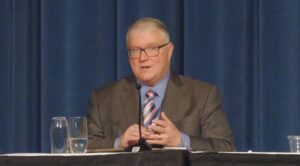
Copernic Space, the latest company to bring Kevin O’Connell onto its advisory board, is unlike other ventures the former director of the U.S. Office of Space Commerce has joined.
The post Copernic Space welcomes Kevin O’Connell to advisory board appeared first on SpaceNews.
Japan’s ispace negotiating first commercial moon landing insurance
Friday, 22 April 2022 18:59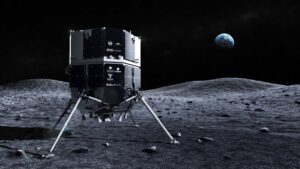
Japanese lunar lander developer ispace said April 21 it is negotiating the world’s first insurance coverage for a commercial mission to the moon’s surface.
The post Japan’s ispace negotiating first commercial moon landing insurance appeared first on SpaceNews.
Space Force radar that monitors low Earth orbit to feed data directly to cloud platform
Friday, 22 April 2022 18:54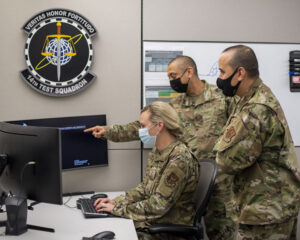
Data from the Space Fence radar that tracks objects in low Earth orbit can now be accessed through the Unified Data Library
The post Space Force radar that monitors low Earth orbit to feed data directly to cloud platform appeared first on SpaceNews.
ESA’s satnav summer school open to students
Friday, 22 April 2022 14:44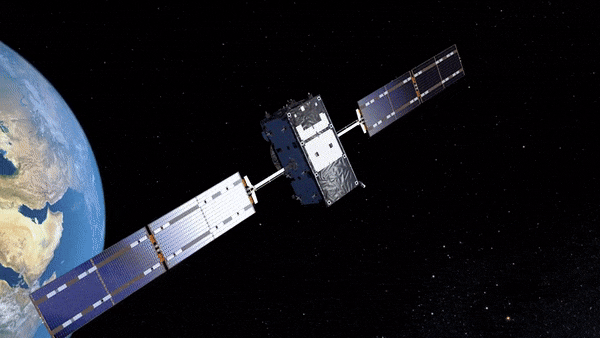
This year’s ESA/JRC International Summer School on Global Navigation Satellite Systems will take place in July, at Kraków in the South of Poland.
Starlink signs first inflight Wi-Fi deal for services later this year
Friday, 22 April 2022 13:44
Jet service provider JSX said April 21 it is set to become the first air carrier to provide Starlink’s satellite broadband services later this year.
The post Starlink signs first inflight Wi-Fi deal for services later this year appeared first on SpaceNews.
Amid prolonged impacts of Covid, the maritime industry showed positive trends in 2021
Friday, 22 April 2022 12:23An increase in active VSATs by 32% and a booming merchant sector and fishing industry has helped the maritime market maintain a positive position, despite the uncertainty brought about by the pandemic and a slow moving start to new NGO constellation deployments.
Paris, Washington D.C., Montreal, Yokohama, 21 April 2022 – Leading space consulting and market intelligence firm Euroconsult has released its annual “Prospects for Maritime Satellite Communications” report, which shows that despite the prolonged COVID-19 pandemic and its associated impacts, 2021 was still a positive year for the global maritime satellite communication market.
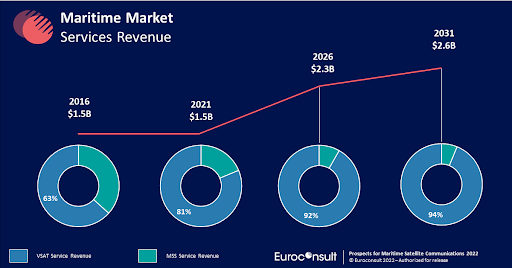
Week in images: 18-22 April 2022
Friday, 22 April 2022 12:07
Week in images: 18-22 April 2022
Discover our week through the lens

